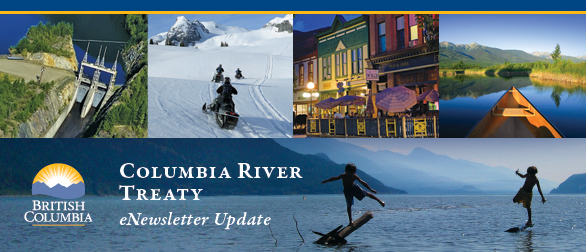Columbia River Treaty
Edition:

Question of the Month
If climate change results in less water flow in the Columbia River, what are the Province's obligations under the Treaty regarding water flow to the U.S.?
During the November 2013 community meetings many people wanted to know more about the Province’s obligations under the Treaty to provide water at the U.S. border.
Under the Treaty the priority water uses are:
1. Ability in each country to withdraw water for domestic and consumptive uses (e.g. drinking and irrigation water)
2. Flood control
3. Energy production
a. firm energy - relied upon to meet current domestic load
b. reservoir refill - preparing for next year’s firm load
c. non-firm energy - not available in all years
4. Other values (e.g. fisheries) not mentioned in the Treaty but managed by each country and through supplementary agreements.
The Treaty does not specify a water flow requirement at the border between Canada and the United States with one exception. Under the Columbia River Treaty (Article XIII), Canada has the right to divert water from the Kootenay River in the vicinity of Canal Flats into the headwaters of the Columbia River as follows:
• Since 1984 Canada has had the right to divert up to 1.5 million acre-feet of water per year, provided that the Kootenay River flow just downstream of the diversion is not reduced below the lesser of 200 cubic feet per second or the natural flow.
• From 2024 – 2044, Canada can divert any amount of water, provided that the flow rates in the Kootenay River at the Canada – U. S. border (near Newgate, B. C.) does not drop below the lesser of 2,500 cubic feet per second or the natural flow at the border.
• From 2044 – 2064, Canada can divert any amount of water, provided that the flow in the Kootenay River at the Canada – U. S. border (near Newgate, B. C.) does not drop below the lesser of 1,000 cubic feet per second or the natural flow at the border.
The Protocol to the Treaty ensured that any diversion of water from the Kootenay River instituted under Article XIII could continue in perpetuity, whether the Treaty is terminated or not. British Columbia does not expect to exercise that right.





















